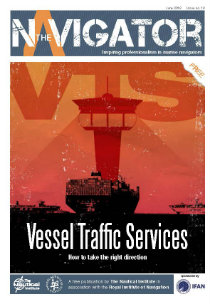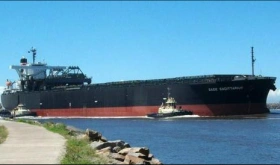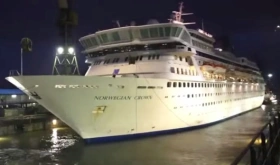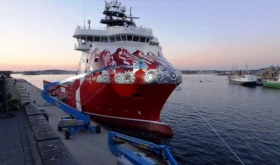The Dutch-flagged MV Stadiongracht ran aground in the 10.0 metre-deep southern channel to Rauma at 00.15 on 29th December 2010. The grounding occurred in a position which is approximately 2.7 miles (5 kilometres) from the pilot boarding position in the direction to the port. While the pilot was under his way to board the vessel, he noticed the ship’s course and although he managed to contact the Master to change course, the accident was not avoided.
The STADIONGRACHT was just about to finish her voyage from Kotka to Rauma. She was carrying kaolin (which is used in paper industry, Kaolin is not classified as a hazardous substance in the IMDG Code). After passing the pilot boarding position south of the Rauma lighthouse, the vessel proceeded towards the beginning of the 10.0 metre navigation line so that the Pilot could embark her. The Pilot was onboard VECHTDIEP and was coming to meet the STADIONGRACHT. A pilot cutter was waiting in the fairway in order to transfer the pilot from one vessel to the other
The operator of the West Coast VTS had informed the STADIONGRACHT that the Pilot was coming to meet her and further that the pilot cutter was on her way. The STADIONGRACHT passed the pilot cutter and the outpiloted vessel and proceeded without stopping towards the tapering part of the channel. The Pilot saw the situation from the VECHTDIEP and contacted the VTS-operator by his mobile phone. The VTS-operator immediately called the STADIONGRACHT on a radio telephone and recommended that the vessel turn and wait for the pilot. The message was acknowledged by the STADIONGRACHT and she started a turn via port. During the turn the vessel ran aground and stopped.
The bottom of the STADIONGRACHT was seriously damaged, especially where the ballast tanks were located. There were no damages to persons or the environment.
It was found out in the investigation that the turn was made via port because the Master had various reasons to consider this direction better. The VTS-operator did not interfere with the turning direction of the vessel.
The STADIONGRACHT was manoeuvred past the pilot boarding position because the communication and the observation of the pilot cutter had led to the misconception that the Pilot was waiting onboard the pilot cutter and was going to board the STADIONGRACHT later, after the pilot boarding position.
The investigation also revealed that the practice with reference to the pilot boarding positions was wide-ranging: passing the pilot boarding position and boarding the vessel later was not that unusual. The communication preceding the course of events between the VTS, the vessel and the Pilot was scarce and made misinterpretations possible.
The above were the result of wrong situational awareness based on radio discussions and traffic observations dominated on the STADIONGRACHT.
Background factors contributing to the accident event included inadequate and on the other hand ambiguous communication with the vessel. Neither the IMO Standard Marine Communication Phrases nor the so-called Message Markers were used.
Furthermore the investigation revealed the following issues:
- It has emerged in the investigation that both authorities and operators have remarkably lax attitudes towards the status of the pilot boarding positions as prescribed by law.
- The starting of pilotage when an inbound vessel was piloted was inadequately defined and documented, which could lead to confusion as to whether the vessel was under pilotage or not.
- The threshold of the vessel traffic service to interfere with the traffic was unnecessarily high and varied from one operator to another.
- The organizational situation lies behind the detected communicational problems. Vessel traffic operators and pilots who strive towards common goals have been placed in separate organizations and under different management systems, and the instructions they had were not coherent.
The Safety Investigation Authority made the following recommendations.
- The Maritime Department at the Finnish Transport Agency was recommended to increase the efficiency of VTS operators’ training thus aiming at encouraging operators to use their full authority.
- The Finnish Transport Safety Agency was recommended to increase the status of pilot boarding positions: according to the law, the pilot can board/disembark a vessel elsewhere than at a pilot boarding position only in exceptional circumstances.
- Finnpilot Pilotage Ltd was recommended to draw clear instructions to pilots on the commencement and ending of pilotage by always using standard messages.
Source: Finland SIA

















“…recommended that the vessel turn and wait for the pilot. The message was acknowledged by the STADIONGRACHT and she started a turn via port. During the turn the vessel ran aground and stopped.”
I think I’d be quite annoyed if I was told to turn and then I ran aground during the turn.